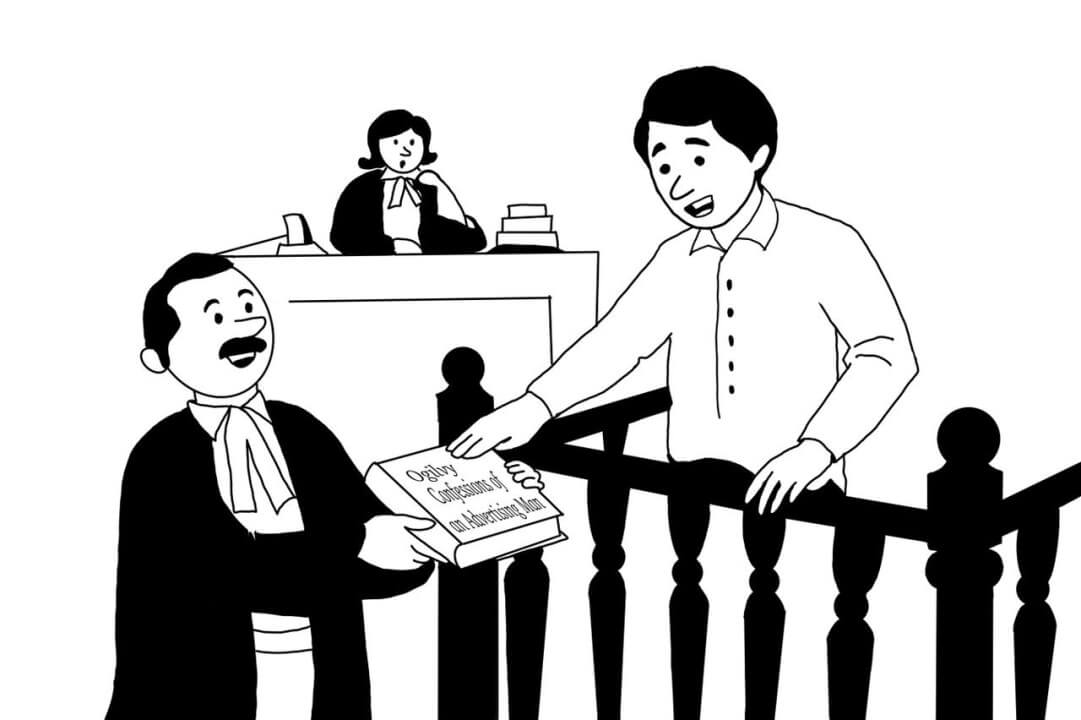Today was a big day – more significant than the launch of an exciting new campaign for a client, even more significant than being awarded a Clio. Today, I was to take my place on the witness stand as one of the members of the advertising cartel that was on trial. The charge? Misleading the public with false advertising.
The session began when the judge entered the courtroom. I took my oath in the witness stand, swearing by Ogilvy’s ‘Confessions of an Advertising Man’ that I would speak the truth, the whole truth, and nothing but the truth. In an advertiser’s vocabulary, the ‘truth’ is a subjective term. We believe in the power of the aspirational truth, the feel-good truth, the emotional truth, and the partial truth.
The judge, who was a consumer herself, was representing the interests of the public. But I was not worried. After all, we hadn’t done anything that hadn’t been done before. Mr. Satya, the public defender, proved my point by spewing out statistics from recent years.
Between 2017 and 2020 alone, 12,000 complaints about misleading advertisements had been registered on the Grievance Against Misleading Advertisements (GAMA) portal. Healthcare and Education are the leading sectors that have received more than two-thirds of all the complaints filed.
Seriously? Healthcare and Education? I am even afraid to talk about false advertisements in the education sector. Mainly because I don’t have 2 Million dollars to lose. Pending payments from a few clients. I’ll just move on with my story, I don’t want to throw my white hat into that muddy ring.
Furthermore, the Advertising Standards Council of India (ASCI) had resolved 317 complaints between August-September last year, which led to the voluntary withdrawal and forced removal of a majority of these advertisements. ASCI now has to deal with complaints related to digital ads too. I have published the Constitution of Digital Advertising on that subject for fellow advertisers to refer to. With the help of my team, I have curated ad policies of major social media channels in this first volume.
Advertisers think of a campaign slogan when they see a customer in pain.
Interestingly, 2020 saw a spike in ads that made claims about Covid-19. ASCI screened over 500 ads related to the virus just last year and even released an advisory stating that brands can’t claim to destroy or remove the virus and will have to substantiate any immunity or treatment claims against the pandemic-causing virus.
One of the ads that violated the code, the public defender, argued, was ours. We had merely showcased how sleeping on a pillow with advanced ‘germ-killing, sleep-inducing, money-doubling while you sleep’ technology from a particular brand can keep you safe during these uncertain times. He then proceeded to ask me a multitude of questions.
What was the intention behind this advertisement?
Were the ‘facts’ claimed in the ad film approved by health authorities such as WHO or ICMR?
Do you think that your advertisement may have given your consumers a false sense of security about Covid-19 when in reality, your product did little to nothing to protect them from the deadly virus?
To make the public feel secure and to give them hope in troubling times.
Were the ‘facts’ claimed in the ad film approved by health authorities such as WHO or ICMR?
We could not get through to them, but we did consult a team of qualified private doctors.
Do you think that your advertisement may have given your consumers a false sense of security about Covid-19 when in reality, your product did little to nothing to protect them from the deadly virus?
*Silence.*
I contemplated the implication of Mr. Satya’s last accusation. Our range of pillows was indeed good for hygiene. And good hygiene was one of the main ways in which the world was fighting Covid-19. To us, that had been enough to piggyback on the virus to market our products. But for the first time, I wondered if we had crossed a line.
As I stood on the witness stand, I reconsidered the way I had always done my job. I recalled what Ogilvy had once written, ‘customer is not a moron, she is your wife. You insult her intelligence if you assume that a mere slogan and a few vapid adjectives will persuade her to buy anything. She wants all the information you can give her.’ What Ogily meant was that today’s customer is smart and well informed. It’ll be a grave mistake to try to sell her something which deviates from the truth. His words still hold true as the internet has made the customer even more aware.
Then I thought about this utopian concept of an ethical ad…
While still promoting the product, an ethical ad refrains from lying, making false claims, and stays within the limits of decency. I had studied the importance of ethical advertising but had always maintained that these textbook theories would not survive a day in our competitive industry. At the same time, I could not deny the presence of companies with a conscience in India. I remember admiring Lifebuoy for its hand hygiene campaign amid Covid-19, which encouraged consumers to use soap – any soap – to take precautions. If they could put the larger cause above their own product and succeed, couldn’t we?
Would taking more responsibility and telling the complete truth adversely impact our marketing strategy?
I wasn’t sure, but I was up for the challenge.
-Malhar Potnis

